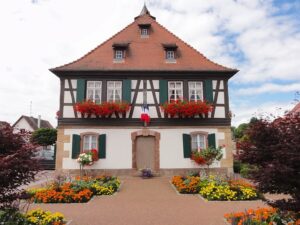Introduction
Plottage in real estate refers to the concept of combining adjacent or nearby parcels of land to create a larger, more valuable property. It involves merging multiple smaller lots into a single larger lot, which can offer various benefits to property owners and developers. Plottage can significantly impact the value and potential use of the combined property, making it an important consideration in real estate transactions.
Understanding Plottage
Plottage is derived from the word “plottage value,” which refers to the increase in value resulting from the consolidation of smaller lots. When smaller parcels of land are combined, the total value of the resulting larger lot is often greater than the sum of the individual smaller lots. This increase in value is attributed to several factors, including increased utility, improved access, and economies of scale.
Factors Influencing Plottage: Several factors influence the plottage value of a combined property. These factors include location, zoning regulations, infrastructure availability, and market demand. Properties located in desirable areas with high demand are more likely to have a higher plottage value. Zoning regulations also play a crucial role as they determine the potential use and density of the combined property. The availability of infrastructure such as roads, utilities, and public amenities can also impact plottage value.
Benefits of Plottage: The consolidation of smaller lots through plottage offers several benefits to property owners and developers. Firstly, it allows for the creation of larger, more valuable properties that can attract a wider range of potential buyers or tenants. A larger property may also provide more flexibility in terms of development options, such as the construction of larger buildings or the inclusion of additional amenities.
Plottage can also enhance the overall utility and accessibility of the property. By combining smaller lots, developers can create larger, more functional spaces that can accommodate various uses. For example, combining multiple residential lots may enable the development of a larger housing complex with shared amenities such as parks, swimming pools, or community centers.
Moreover, plottage can result in cost savings and efficiencies. Consolidating smaller lots can reduce the overall costs associated with land acquisition, surveying, and infrastructure development. It can also lead to economies of scale, allowing for more efficient use of resources during construction or maintenance.
Challenges and Considerations
While plottage offers numerous advantages, there are also challenges and considerations to keep in mind. One of the primary challenges is the need to navigate through zoning regulations and obtain necessary approvals from local authorities. Zoning restrictions may limit the density or type of development allowed on the combined property, which can impact its potential value.
Additionally, the process of acquiring multiple smaller lots and negotiating with different property owners can be complex and time-consuming. It requires effective communication, negotiation skills, and legal expertise to ensure a smooth consolidation process.
Conclusion
Plottage plays a significant role in real estate by allowing for the consolidation of smaller lots into larger, more valuable properties. The concept of plottage value considers various factors such as location, zoning regulations, infrastructure availability, and market demand. By combining smaller lots, property owners and developers can create more valuable, functional, and flexible properties that can attract a wider range of potential buyers or tenants. However, navigating through zoning regulations and the complexities of acquiring multiple lots can pose challenges. Understanding the concept of plottage and its implications is essential for real estate professionals and investors.
References
– Investopedia: www.investopedia.com
– The Balance: www.thebalance.com
– Realtor.com: www.realtor.com













